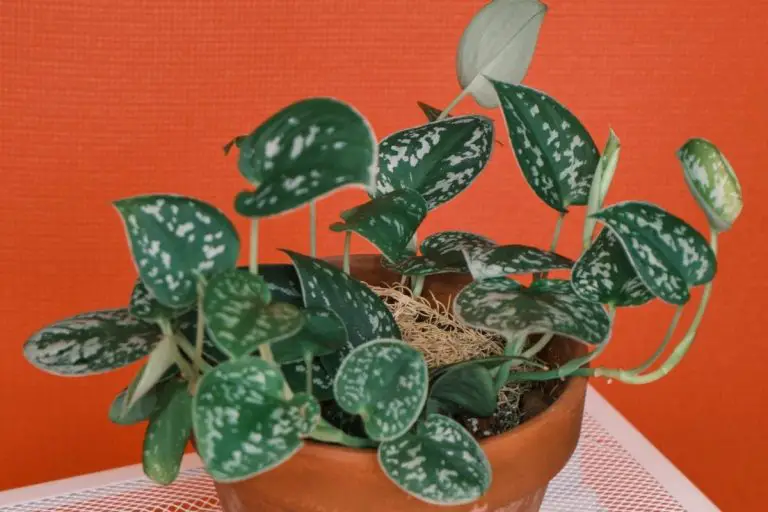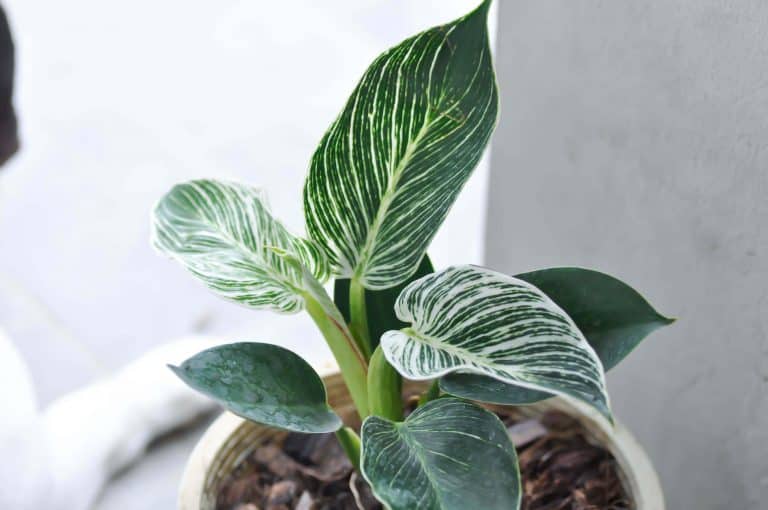Scindapsus Treubii – The Optimal Care Guide
If you are thinking of levelling up your houseplants game, then the Scindapsus Treubii is perfect for you. Scindapsus Treubii is a beautiful, super rare houseplant that has become a big hit in the gardening community.
The Treubii plant is famous for its vintage-looking foliage.
Although it is a rare plant, you will be surprised that they are easy to care for and require little attention to thrive, which is amazing for busy people or amateur gardeners.
In this Scindapsus Treubii essential care guide, you will get to learn the tricks and tips on how to thrive your Scindapsus Treubii plants.
Here is what will be covered in this article:
- – What Is Scindapsus Treubii?
- – How Do You Care For Scindapsus Treubii?
- – How To Propagate A Treubii Plant?
- – Treubii Common Problem and Remedy
- – How To Make Scindapsus Treubii Grow Faster?
- – Are Scindapsus And Pothos The Same?
- – Is Treubii Moonlight A Pothos?
- – Is Scindapsus Treubii Safe For Pets?
- – Where To Buy A Scindapsus Treubii?
- – Tips On How to Deal With Scindapsus Treubii Transportation Stress
DISCLAIMER
Some of the links on here are affiliate links and I may earn if you click on them, AT NO EXTRA cost to you. Hope you find the information here useful! Thanks.
Related Articles:
- Peperomia Polybotrya: Comprehensive Care Guide
- How to Care for Philodendron Verrucosum: Essential Tips
- Scindapsus Treubii Moonlight: A Plant Lovers Care Guide
- Scindapsus Moonlight – Essential Tips You Need to Know
- Philodendron Giganteum – Complete Care Guide
- Scindapsus Pictus Argyraeus (Silver Pothos) – Care Tips
What Is Scindapsus Treubii?
Scindapsus Treubii comes from the Scindapsus genus of flowering plants in the Araceae family, which originates from the tropical rainforest of Southeast Asia.
They are also native to New Guinea, Pacific Islands and Queensland.
In brief, the Treubii plant belongs to the group as follows:
- – Family: Araceae
- – Genus: Scindapsus
- – Species: Treubii
Scindapsus Treubii Characteristics
The Treubii plant is an epiphyte (a plant that grows upon another plant) and evergreen (a plant in which foliage remains green) in nature.
Scindapsus Treubii habitually trails on the ground or climbs up trees with their aerial roots.
As houseplants, if given the right conditions and strong support like bamboo sticks or moss poles, the plants can grow higher to their full potential, about 6 to 8 feet high.
Furthermore, they have gorgeous satin-finished oval and heart-shaped leaves that are thick and sturdy. Thus, make them look very charming to your eyes. Once they become mature, the leaves can grow longer up to 12 to 60 centimetres.
They also sometimes produce flowers in nature but seldomly bloom when they live indoors.
The Scindapsus Treubii Varieties
There are two distinct varieties in Scindapsus Treubii. And the difference between both of them falls on the shades of their leaves:
1. Scindapsus Treubii Moonlight
The Scindapsus Moonlight Treubii have leaves that are oval-shaped with a silver-green colour.
Sometimes, due to its silver hue at the centre, the Moonlight Scindapsus is called by another name which is Scindapsus Treubii Silver.
2. Scindapsus Treubii Dark Form
Scindapsus Treubii Dark leaves are usually in deep dark green colour. But due to certain lighting conditions, the leaves in a glance will look black.
The enormous amount of chlorophyll is what makes the leaves dark green and almost black. Hence, at one point, it is also called Scindapsus Treubii Black or Treubii Black.
How Do You Care For Scindapsus Treubii?
The Treubii plant is super rare, plus not every nursery or garden centre has it.
But once you find them, even though the plants require only a little care to live, try your very best to keep these gems alive and thrive, as they are quite rare!
Here are all the best guidelines that you can apply for both Scindapsus Treubii Moonlight care and Scindapsus Treubii Dark Form care:
1. The Soil
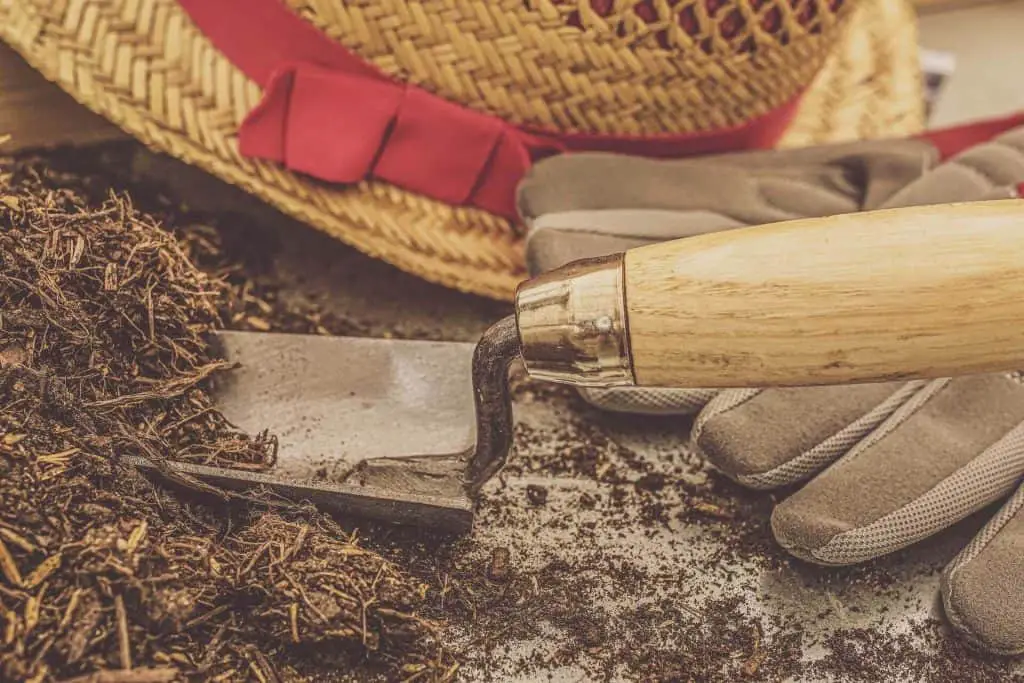
One of the great things about Scindapsus Treubii is that they are not picky when it comes to soil.
Any regular houseplant mix works for these plants.
If you make your soil mix, ensure that the soil, perlite, and orchid bark are mixed in equal parts.
If making your own potting seems a bit too far fetched, there are plenty of vendors selling high quality organic potting mix which you can simply get potting away!

According to research done by Wong Sin Yeng on ResearchGate, Scindapsus Treubii is often grown in peat swamp forests. For that reason, they are also able to thrive on peat moss.
2. The Watering
Scindapsus Treubii does not require a lot of water to live, and they will not mind if you do not water them regularly since they can withstand minor droughts.
However, avoid neglecting them for a longer duration. Otherwise, you might stress the plants out. You might want to consider these plug-in self-watering spikes.

The best time to water your Treubii plants is when the soil is drying out. Here are the signs that will show when your plants need water:
– Check the soil moisture by sticking your index finger to the soil. If the top 1 to 2 inches of the soil feels dry, it is time to water them.
– If the leaves start to curl, then it means your plant is thirsty. You will see this happen on Scindapsus Moonlight. So water them immediately, and the leaves will be back to their vibrant self once they have received enough water.
– Scindapsus Treubii Dark Form, on the other hand, its leaves appear to be less resilient, dull, and wrinkled when they lack water.
It is important not to overwater your plant. Ensure that you are using good drainage soil and a pot with a drainage hole. Otherwise, soggy soil will cause the root to rot.
To really ensure your plants’ optical watering needs, consider purchasing a hydrometer that will deliver accurate readings as to whether your plant requires watering or not.

3. The Lighting
An ideal light for Scindapsus Treubii is bright indirect sunlight. An east-facing window or room with lots of filtered light is a great place to put your plants as it provides a vast amount of bright indirect sunlight to your plant.
However, do not place your plants at a location that provides direct sunlight, as this will scorch the leaves.
Alternatively, you may add shaded curtains or blinds that can filter and reduce the level of sunlight hitting your Scindapsus Treubii.

Treubii can survive in low light conditions. But you will notice that in this condition, the plant state of growth will be pretty slow, and its leaves will fade in colour.
4. The Temperature
As plants that come from tropical rainforest environments, these plants excel in warm conditions. The best temperature range for Scindapsus Treubii is between 67 to 75 °F (12 to 28 °C).
Yet, if you place these plants in high-temperature environments, the plants will start to wilt.
These plants are also very adaptable to a cold environment. However, they will never survive in an environment below freezing temperature because it will cause frost damage to the plants.
Use a 2 in 1 hydro thermometer to make sure your plant is growing in optimal conditions.

5. The Humidity
Scindapsus Treubii loves a high humidity environment. A humidity level of around 60% is the perfect environment for Treubii plants to thrive.
However, since the plants are very hardy, they can still live in humidity levels as low as 40%.
If you notice your plants show signs such as the leaves turning yellow at the edges, this indicates that your plants are not receiving enough moisture.
Therefore, mist the plants regularly with water or add humidifiers at your home to increase the level of humidity.
6. The Fertilizer
Use a fertilizer that is rich in nitrogen to help your Treubii plant foliage grow beautifully.
Fertilizer with NPK ratios of 20-10-10, which has been diluted to half of its strength, is one of the examples of fertilizer that you can use for your plants.
On the other hand, you may also use an organic fertilizer such as fish emulsion or vermiculite to avoid salt accumulation and root burning, which happens when using synthetic fertilizers.
The ideal time to feed your Treubii is during the growing season (spring and summer) since this is the time when most plants are in the best conditions to promote new growth.
Feed them either bi-weekly or once a month during this time to get the best result. During the winter season, feeding is unnecessary due to the plants being in a dormant state.
Feed your indoor houseplants with high-quality organic fertilizers either when repotting or before watering.

7. The Potting
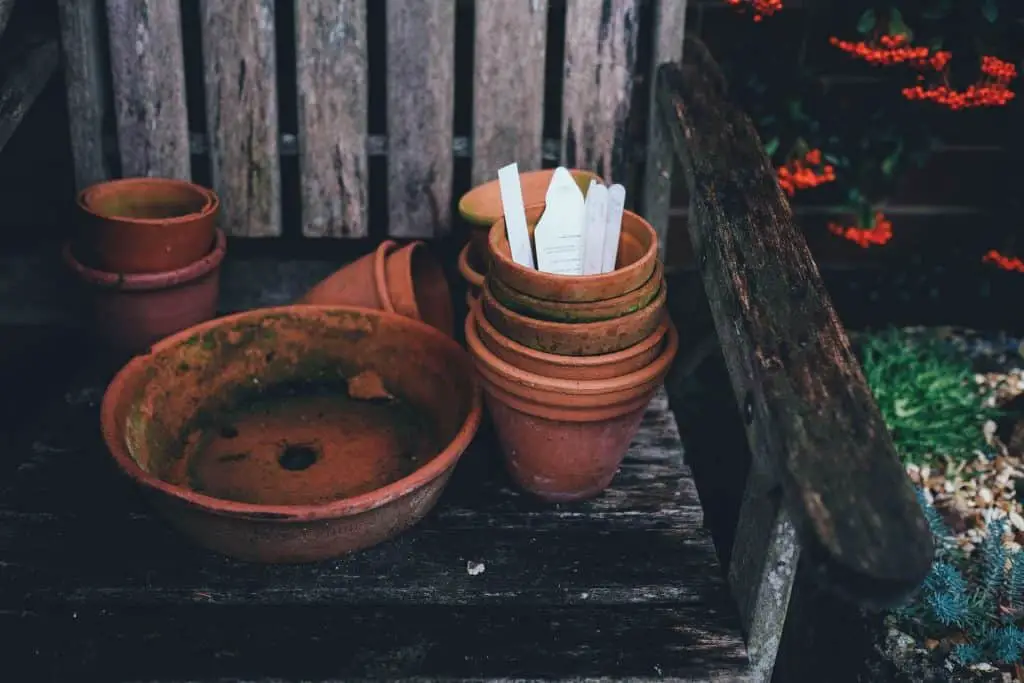
A good quality terracotta pot with a large drainage hole is an excellent choice for Scindapsus Treubii.
Terracotta pots made from clay are known to be good at attracting and keeping moisture in the soil. Thus, it is a good pot for you to use to ensure your Scindapsus Treubii is not overwatered.

You can also use plastic pots for your Treubii, but please ensure that the hole size is adequate for quick draining and the soil use is fast-draining soils.
Never plant your Treubii in a pot without a drainage hole because it will drench the soil and lead to root rot.
Scindapsus Treubii does not require frequent repotting since the plant state growth is somewhat slow.
Also, frequent repotting will do more harm than good to Scindapsus Treubii. Therefore, it is advisable for you to only re-potting your plants when they are in condition as follows:
– The roots are coming out of its pots, telling us that it has outgrown its current pot.
– The plants are getting infected with a disease.
– The plants are waterlogged.
Note– This affordable ultimate gardening set has 83 pieces and will make your life easier!
8. The Support
For your Scindapsus Treubii to reach its full growth potential, the plant requires support to help the plant climb up.
Organic material support such as a sphagnum stick is the best support for these plants to develop their aerial roots and produce quality leaves.

Once the plants reach the top, you can either upgrade the moss stick or prune it back to encourage lushing leaves.
Without the support, the plants will remain in their juvenile form and grow with smaller and narrow leaves. Thus, this form can live well in a hanging basket.
How to Propagate a Treubii Plant?
The growing season around spring and summer is the best time for you to propagate a Scindapsus Treubii as it is the right time to encourage growth.
A great way to propagate a Treubii plant is by cutting its stem with at least a node and a leaf.
Soil and sphagnum moss propagation are the most preferred ways to propagate Scindapsus Treubii.
On the contrary, water propagation is the least preferred method. The reason is that water propagation produces weak roots and also often suffers shock when transplanted into the soil.
Though water propagation is an easy method, Scindapsus Treubii does not do well with this technique.
Soil Propagation
The advantage of soil propagation is that the process does not require a change of the environment like water propagation.
Hence, it is one of the preferable methods to propagate Scindapsus Treubii.
The Steps:
1. Clean your tools and equipment by sanitizing them before you start cutting the stems.
2. Cut the tip of the plant to about 3 to 4 inches in length. Make sure one node with at least one leaf is in the cuttings.
3. Prepare a pot with a soil mix that includes an equal part of perlite and peat moss.
4. Water the soil before you plant the Treubii cutting.
5. Place the stem cutting in the soil and cover the node with soil.
6. Water the top of the soil and ensure it is not too wet and soggy.
7. Cover the pot with a plastic bag to enhance its humidity.
8. Place it at a warm location with bright indirect light and let its roots grow.
9. Ensure you air the plastic bag regularly to prevent any microbial growth inside.
10. Once the roots start developing after 3 to 4 weeks from the first day of propagation, remove the plastic bag and water the plant mildly.
11. Ensure that the top of the layer is drying out between the consecutive watering. Avoid overwatering during this phase as it will lead to damaging the roots.
12. Wait for about 3 to 4 months to get the plant ready to be transferred into a bigger pot permanently.
Sphagnum Moss Propagation
Sphagnum Moss propagation is another favourite method for propagating Scindapsus Treubii.
This technique eases the transition shock during the transition to the soil due to the method creating thick and sturdy Treubii roots.
Thick and sturdy roots are known for their ability to withstand stress during the transition to the soil, resulting in high success rates in propagation.
The Steps:
1. Cut the stems with at least a node and 1 to 2 leaves at the top.
2. Remove any leaves at the bottom, if any.
3. Wet the sphagnum moss with water and squeeze out the excess water.
4. Fill up a container or a pot with the moist sphagnum moss together with some perlite.
5. Set the cuttings into the moss mix where the node is down in the moss a few inches deep.
6. You may also add rooting hormones to the stem cut end before placing the cuttings into the moss mix. However, this is optional.
7. Place the setup in a plastic bag to keep the humidity level high.
8. Check the cuttings every week to ensure you air them to give the cuttings some air to breathe.
9. Mist the cuttings when you notice the soil is drying out.
10. Once the roots are grown for several inches long, transfer the plant into the soil.
11. Your plant might experience some shock like curled leaves. So, do not be surprised! As this is common. It will rebound back in a few weeks.
12. Keep watering the plant every time the soil is dry and ensure you do not overwater it.
Treubii Common Problems and Remedies
Although, Scindapsus Treubii is a tough plant. Still, sometimes they do encounter several problems such as discoloured leaves, disease, or pests.
1. Overwatering
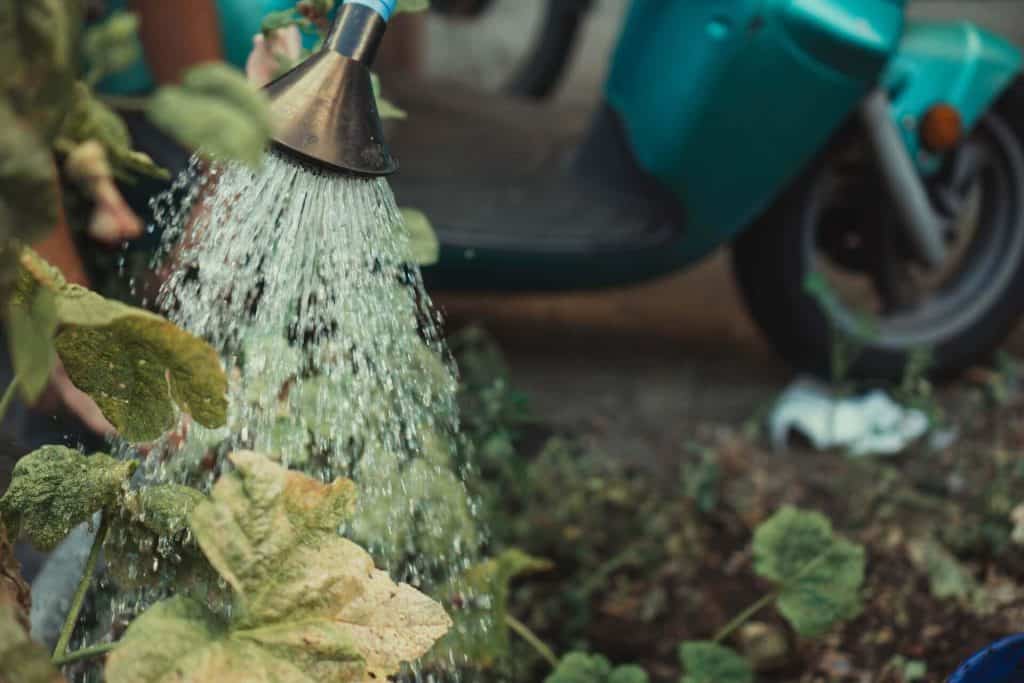
Overwatering your Treubii plant will cause several issues as follows:
– Root rot
– Yellowing leaves
– Drooping plants
The reason for this is too much water causes the soils to become too dense. Hence, drowning the roots from getting proper oxygen leading them to rot.
If you notice your plants are showing symptoms as stated above, here are some of the things you can do to treat them:
– Check the drainage hole of the pot, ensure it is not blocked.
– Check and change the soil if it remains wet and soggy after about a week from the last water.
– Keep track of your watering routine, and make sure you let the soil dry out before you water the plants.
If the symptoms continue to persist, your Scindapsus Treubii might already be affected by root rot.
Here’s what you can do to treat the root rot infection:
1. Identify if the roots can be saved by confirming that there are still healthy, white, and firm roots.
2. Prune all the affected roots as well as the dead foliage. Ensure you are using a knife or scissors that have already been sterilized.
3. Clean the roots with room temperature water gently.
4. Discard the infected soil from the pot and clean it thoroughly with a bleach-water solution to ensure it’s free from any bacteria or fungi.
5. Apply fungicide solution to the roots to prevent re-infected.
6. Repot your plants into a new soil mix and a clean pot.
2. Underwatering
Underwatering plants will usually droop and wilt. If you observe your Scindapsus Treubii showing underwater symptoms, immediately check the soil.
If the soil is too dry, water your plants as soon as possible and fix your watering schedule.
3. Pests
Scindapsus Treubii seems to be immune to most pests as they hardly suffer from any unwanted pests attack.
But if your Treubii does encounter a pest attack, get your plants some insecticide to treat it.
Neem oil is also great for getting rid of all the pests.
How to Make Scindapsus Treubii Grow Faster?
Here is how you can make Scindapsus Treubii grow faster:
– Provide your Treubii plants with lots of bright filtered lights.
– Increase the humidity level around your Scindapsus Treubii since the plants love warm environments.
– Fertilize your plants regularly (once a month or bi-weekly) during the growing season to promote their growth.
Are Scindapsus and Pothos the Same?
Scindapsus and Pothos are not the same. However, due to their similar features, they often get confused as plants came from the same genus, Epipremnum Aureum (commonly known as Pothos).
Due to that reason, they receive a common name such as Satin Pothos.
Although they are similar, they can still distinguish by looking at the number of seeds they produce. The Scindapsus genus produces a single kidney-like seed, while Epipremnum has many seeds.
Is Treubii Moonlight a Pothos?
Treubii Moonlight is not Pothos. But it is often called Satin Photos Moonlight due to its features being almost the same as Pothos.
Moonlight Treubii is also sometimes confused with another Scindapsus species called Scindapsus Pictus aka Satin Pothos. Since both species have pretty much similar silver-green leaves.
Is Scindapsus Treubii Safe for Pets?
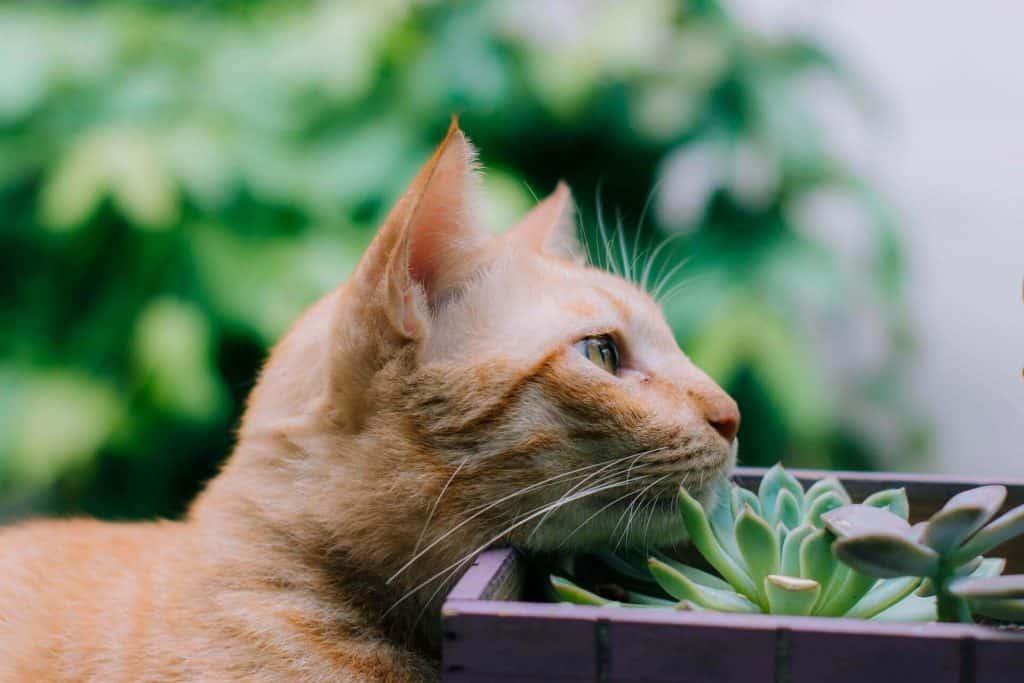
Like most species in the Scindapsus genus, Treubii is toxic for both animals and pets.
The plants can cause swelling of the oral tissue and digestive system if your pets happen to chew or eat them.
Hence, keep the plants out of your pets’ reach by putting them on high shelves, in a greenhouse cabinet, etc.
Where to Buy a Scindapsus Treubii?
Scindapsus Treubii is not easy to find in any regular nursery or garden centre, given it is a pretty rare plant.
If you are looking for Scindapsus Moonlight, you may check out Costa Farm. A major houseplant producer and wholesaler for big box stores like Home Depot, Ikea, Walmart, etc.
Since Scindapsus Treubii Moonlight is one of their tropical trending collections, you might find them at one of their retailers.
When you find the Treubii plant, make sure you grab it as soon as you see it because it will surely go fast since it is quite a popular rare plant.
Alternatively, you may buy Scindapsus Treubii online:
– Etsy
– eBay
– Rooted Hue
– Private sellers from Facebook or Instagram
Tips on How to Deal With Scindapsus Treubii Transportation Stress
If you buy Treubii plants online, the shipping process might stress the plants and cause them to not be in good shape when the plants are delivered.
So, here are some tips on how you can deal with the transportation stress when you receive your Scindapsus Treubii Plants:
– Do not purchase your Treubii plants during hot and cold seasons. Although, most sellers will pack the plants in a proper container that maintains the warmth and humidity of the plants. The probability for the plants to survive is low since they will be travelling for quite a while in various conditions.
– Unpack the plants immediately once you receive your plants, and remove any dry or dead leaves, if any.
– Clean the leaves with water thoroughly, and apply Neem oil on the leaves, if you notice there are yellowing or black spots on the leaves and the soils are damp. This sign is probably due to mould issues since the plants were stored in a humid and dark place during transportation.
– Put the plants at a location with good air circulation and lots of bright indirect lights.
– Water your plants if you notice the soils are dry.
– Put the plants in a plastic bag or humidity dome to increase the humidity of their environment. Hence, help to ease its transition to a new environment.
– Repot your plants about a month after you receive them or when you see them grow well.
– Feed your plants with fertilizer about a couple of weeks after you first received them to avoid the plants facing some shock.
– In the first month or two, there might be yellowing and wilt leaves. Don’t worry since this is normal. Instead, keep taking care of your plants according to the care guide, and it will be fine.
Conclusion
Scindapsus Treubii is a gorgeous, rare vining plant that has incredible thick satin-like foliage.
Whether you choose Scindapsus Treubii Moonlight or Scindapsus Treubii Dark Form, their stunning foliage will for sure lift up the moods of your home.
The Treubii plants are not only beautiful but also easy to care for with little maintenance, adaptable in any environment, and strong against any pest. Hence, make it perfect for everyone to own one.
Do you own a Scindapsus Treubii? Which varieties did you like? Do share your experience on Scindapsus Treubii care so that other people can learn it as well.




